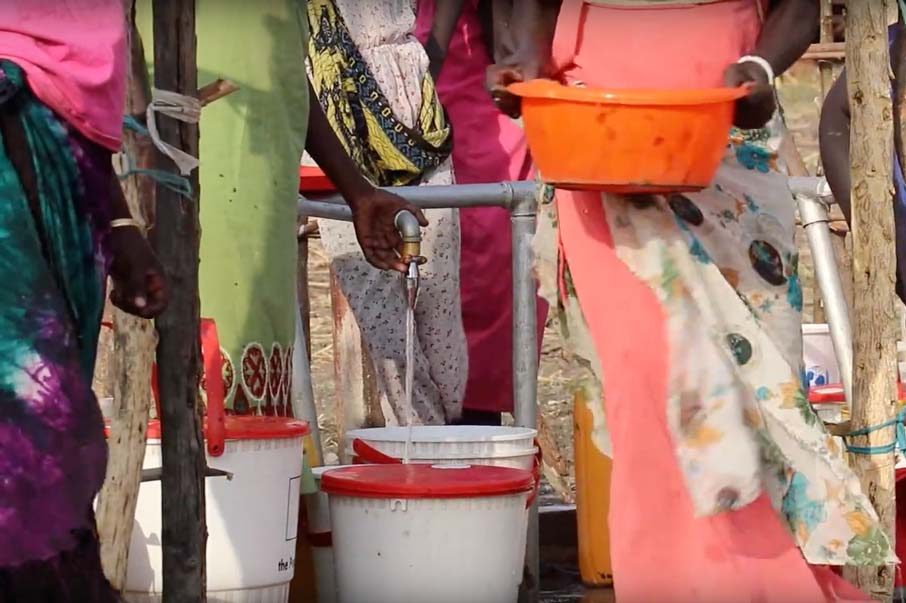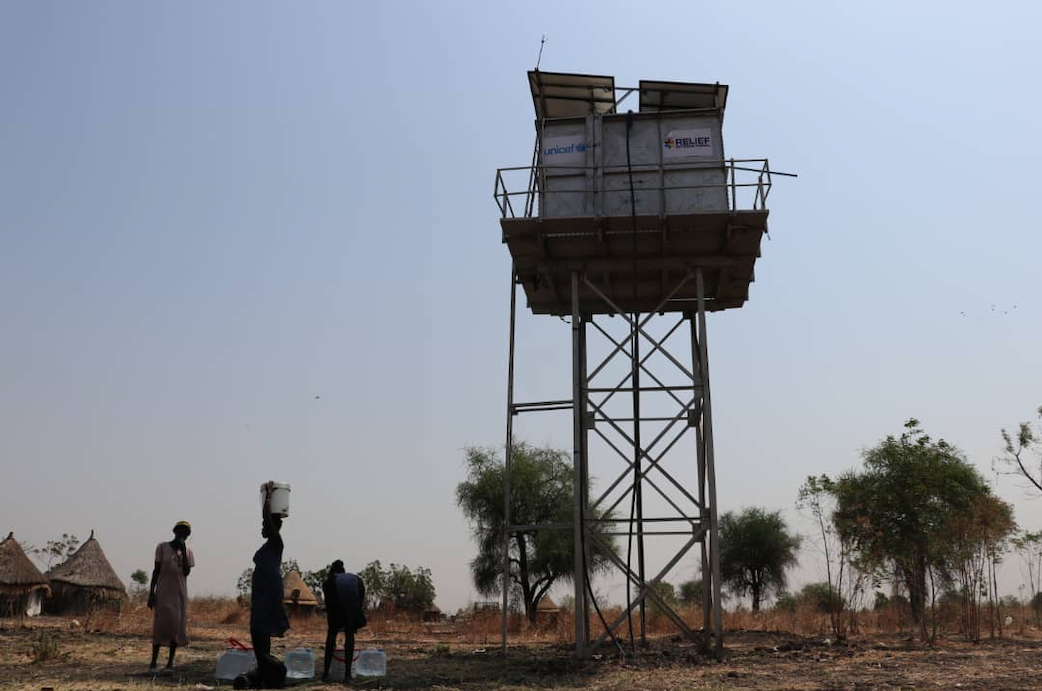Relief International partners with UNICEF to restore water in Mathiang, South Sudan

Relief International partners with UNICEF to restore water in Mathiang, South Sudan. Learn more about the project in this video.

In South Sudan, at least fifty percent of the country lacks access to safe, drinking water. Through a strategic partnership with OFDA and UNICEF, Relief International teams built new water supply systems in five locations across South Sudan.
Many people across the country are forced to walk for hours each day to collect water for their families. This task usually falls to women and girls. Hours spent collecting water prevents children from pursuing an education and parents from earning a living to support their families. In addition, often the water that is available contains diseases such as cholera and diarrhoea, which remain the leading causes of death among children in South Sudan.
South Sudan’s five-year civil war has virtually shut down the country’s water and sanitation systems, which were already extremely underdeveloped, prompting a severe water crisis across the country. This situation is further aggravated by a lack of sustainable systems for maintaining the country’s existing water and sanitation systems, which have fallen into disrepair in recent years. Without access to safe water, the health of these already vulnerable communities is jeopardized at every level.
Through a strategic partnership with OFDA and UNICEF, Relief International teams built new water supply systems in five locations across South Sudan’s Longechuk, Ulang, Nasir and Mathiang counties. This project was the first of its kind in the area, connecting communities’ access to safe drinking water.
Over the course of this project, our teams worked with local experts to construct new water supply systems designed to hold 18,000 liters of water, which is enough to support the needs of 2,000 people at any given time. The system is equipped to deliver a constant supply of clean water. The water systems operate like a sink or a faucet, which means that community members no longer have to pump water —quite a labor intensive activity that can trigger chronic aches and pains.
In South Sudan, the country’s water crisis is not only an issue of a lack of access but is further compounded by poor hygiene practices. To combat this systemic issue, our teams also led trainings on proper hygiene techniques, including handwashing with soap. These simple trainings have led to noticeable behavioral changes within these communities, which have, in part, reduced the number of cases our clinics see for waterborne illnesses.
The new water systems are strategically located at the heart of these villages to ensure access remains equitable. Located near homes, schools or local markets, women and girls are able to collect water within a matter of minutes. With less time spent collecting water, women and girls regain their ability to attend school and earn a living –all of which works to end the cycle of poverty.

Relief International partners with UNICEF to restore water in Mathiang, South Sudan. Learn more about the project in this video.